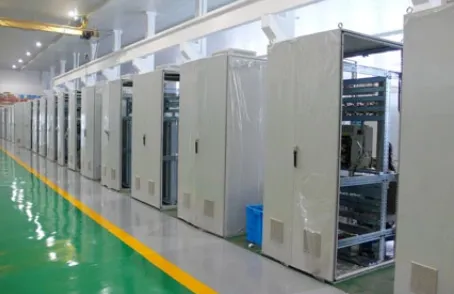
What Is Automatic Gauge Control (AGC) In Steel Rolling?
In modern steel rolling mills, precision and consistency in sheet thickness are critical for product quality. Automatic Gauge Control (AGC) is an advanced control system designed to maintain uniform thickness across rolled steel strips by continuously adjusting mill parameters in real time. The AGC system integrates sensors, hydraulic actuators, and feedback loops to compensate for variations in material properties, temperature, and rolling forces.

The primary objective of an automatic gauge control system is to minimize deviations in strip thickness, ensuring compliance with stringent industrial standards. By leveraging high-speed data processing and responsive actuators, AGC enhances productivity while reducing material waste.
How Does an AGC System Work in Steel Rolling?
Real-Time Thickness Monitoring and Feedback
At the core of every AGC controller is a high-precision thickness measurement device, typically an X-ray or gamma-ray gauge. This sensor scans the steel strip as it exits the rolling mill, providing instantaneous feedback on thickness variations. If deviations from the target thickness are detected, the AGC system triggers corrective actions to adjust roll gaps or rolling pressure.
Hydraulic or Electromechanical Actuation for Instant Adjustments
Modern automatic gauge control systems use hydraulic screw-down mechanisms or electromechanical actuators to fine-tune the roll gap. Hydraulic AGC systems, in particular, offer rapid response times—often within milliseconds—making them ideal for high-speed rolling mills. The AGC controller calculates the required adjustment based on sensor data and applies the necessary force to maintain consistent thickness.
Integration with Automatic Pressure Control for Enhanced Stability
Since rolling force directly influences strip thickness, some AGC systems incorporate automatic pressure control to regulate the hydraulic pressure applied to the rolls. This dual-control approach ensures that both the roll gap and rolling force are optimized, compensating for material hardness fluctuations and improving gauge accuracy.
Key Components of an AGC System
Thickness Measurement Sensors
X-ray and gamma-ray sensors are the most common devices used in automatic gauge control systems due to their non-contact measurement capability and high accuracy. These sensors continuously monitor the strip thickness and transmit data to the control unit for processing.
Hydraulic Gap Control (HGC) Systems
A critical subsystem within AGC, Hydraulic Gap Control (HGC) adjusts the roll gap using high-pressure hydraulic cylinders. The AGC controller sends signals to these cylinders, which expand or contract to modify the distance between the work rolls, ensuring consistent product thickness.
Programmable Logic Controllers (PLCs) and Advanced Algorithms
The AGC controller relies on sophisticated algorithms to predict and compensate for thickness variations. Modern systems use adaptive control strategies, such as feedforward and feedback loops, to anticipate disturbances (e.g., temperature changes or incoming material inconsistencies) and adjust rolling parameters proactively.
Benefits of Using AGC in Steel Rolling Mills
Improved Product Quality and Consistency
By minimizing thickness deviations, an automatic gauge control system ensures that rolled steel meets strict dimensional tolerances. This is particularly crucial in industries such as automotive and aerospace, where material uniformity directly impacts performance and safety.
Reduced Material Waste and Cost Savings
Traditional rolling processes often result in off-spec products due to uncontrolled thickness variations. AGC reduces scrap rates by maintaining precise gauge control, leading to significant material and cost savings.
Enhanced Mill Productivity and Speed
Since AGC systems operate in real time, rolling mills can operate at higher speeds without sacrificing accuracy. This increases throughput while maintaining high-quality output, making the process more efficient.
Challenges and Future Developments in AGC Technology
Handling High-Strength and Thin-Gauge Materials
As demand grows for ultra-thin and high-strength steel, AGC systems must evolve to handle greater rolling forces and tighter tolerances. Advanced predictive models and AI-driven control strategies are being developed to address these challenges.
Integration with Industry 4.0 and Smart Manufacturing
Future automatic gauge control systems will increasingly incorporate IoT-enabled sensors and machine learning algorithms for predictive maintenance and optimization. Real-time data analytics will allow mills to fine-tune AGC performance dynamically, further improving efficiency.
The Critical Role of AGC in Modern Steel Production
The Automatic Gauge Control (AGC) system is a cornerstone of precision steel rolling, ensuring consistent thickness, reducing waste, and enhancing productivity. By combining real-time sensors, hydraulic actuators, and intelligent control algorithms, AGC controllers deliver unmatched accuracy in strip thickness regulation.
As steel manufacturers push toward thinner, stronger, and more specialized products, advancements in automatic pressure control and adaptive AGC technologies will play a pivotal role in meeting industry demands. The continued evolution of AGC systems will drive efficiency, sustainability, and innovation in steel production for years to come.
-
YWLX’s 1450mm Six-Hi Reversing Mill Goes Live in BangladeshNewsNov.24,2025
-
Adjusting Roll Gap in 6Hi Reversing Cold Rolling Mill for Thin StripNewsNov.13,2025
-
Quality Control Standards for Automatic Gauge Control in Strip RollingNewsNov.13,2025
-
Effect of Skin Pass Rolling on Metal DuctilityNewsNov.13,2025
-
Key Components of a Modern TempermillNewsNov.13,2025
-
Common Wear Patterns of Work Roll in Tandem Cold Mill OperationsNewsNov.13,2025
-
Revolutionary Skin Pass Rolling Technology for Enhanced Steel QualityNewsNov.04,2025










